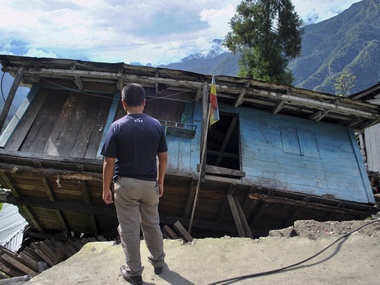The recent earthquake in Sikkim brings to light, once again, the potential loss to countries. Not only are human lives lost, but the economic losses can be tremendous as well. The death toll from the Sikkim earthquake is reportedly at 80 at present, and counting. The loss to property and economy has not even begun to be estimated.
Losses from natural disasters
The magnitude of the Sikkim earthquake has restricted the overall damage, but natural disasters like earthquakes, tsunamis, hurricanes, floods can wipe out years of progress in a flash.
The Japanese earthquake and tsunami that occurred earlier in 2011 is expected to result in a loss of as much as $235 billion, or about 4.1 percent of the Japanese GDP. Japan’s economy might well contract this year as it copes with the losses of the natural disaster.
While the latest Japanese earthquake is reportedly the most expensive ever, other natural disasters in the recent past have caused substantial damage to life and property too. For instance, the 1995 Kobe earthquake is estimated to have cost as much as $235 billion, or 1.9 percent of Japanese GDP.
[caption id=“attachment_88500” align=“alignleft” width=“380” caption=“A man stands in front of his house, which was damaged by the earthquake, at Mangan village Gangtok . Reuters”]
 [/caption]
[/caption]
In the US, the hurricane prone zone, losses on account of Hurricane Katrina in 2005 cost the US 1 percent of its GDP, while Hurricane Ike in the US and the Caribbean (2008) cost about 0.3 percent of GDP.
The Yangtze river floods of China in 1998 cost the country as much as 3 percent of its GDP, and the Great Floods in the US in 1993 cost 0.3 percent of its GDP.
India’s previous earthquake experiences
Of course, India is no stranger to natural disasters. The Bhuj earthquake, one of the major natural disasters in India in recent times, in 2001, is estimated to have had a death toll of 20,000 people and a loss of assets of as much as $2.1 billion on account of asset losses or direct damage alone, and another $2.3 billion in reconstruction costs to restore properties to their previous standards.
The tsunami that hit the Indian Ocean in 2004 was another major calamity across various parts of Asia, with a damage estimate at $14 billion.
Slideshow of damages from Sikkim earthquake
[fpgallery id=231]
Unfortunately, unlike disasters of the economic kind, there is little that can be done to prevent earthquake damage, except maybe pray.
Of course, it is possible to start thinking ecology when we plan development projects, but that involves costs of its own.
)